earthquake
 Most people know that with an earthquake underwater, comes the possibility of a tsunami. Tsunamis can cause as much or more damage that the original earthquake. I think we all know that living in a coastal area puts the residents in possible danger when these offshore earthquakes hit, but what happens further inland? The tsunami doesn’t normally travel too far inland…unless it is a fluvial tsunami. This was a type of tsunami I had never heard of before. Nevertheless, on this day, February 7, 1812, there was a series of earthquakes in Missouri. They were the most violent and powerful quakes in the history of the United States. The series of tremors, which took place between December 1811 and March 1812. The Seismic activity was quite unusual for the area around the city of New Madrid, located near the Mississippi River in present day Arkansas, which had about 1,000 residents at the time, most of whom were farmers, hunters, and fur trappers. It all began on December 15, 1811with unusual tremors. Then, at 7:15am, an even more powerful quake erupted, now estimated to have been an 8.6 magnitude quake. This quake literally knocked people off their feet and many people experienced nausea from the extensive rolling of the earth. Given that the area was sparsely populated and there weren’t many multi-story structures, the death toll was relatively low. However, the quake did cause landslides that destroyed several communities, including Little Prairie, Missouri.
Most people know that with an earthquake underwater, comes the possibility of a tsunami. Tsunamis can cause as much or more damage that the original earthquake. I think we all know that living in a coastal area puts the residents in possible danger when these offshore earthquakes hit, but what happens further inland? The tsunami doesn’t normally travel too far inland…unless it is a fluvial tsunami. This was a type of tsunami I had never heard of before. Nevertheless, on this day, February 7, 1812, there was a series of earthquakes in Missouri. They were the most violent and powerful quakes in the history of the United States. The series of tremors, which took place between December 1811 and March 1812. The Seismic activity was quite unusual for the area around the city of New Madrid, located near the Mississippi River in present day Arkansas, which had about 1,000 residents at the time, most of whom were farmers, hunters, and fur trappers. It all began on December 15, 1811with unusual tremors. Then, at 7:15am, an even more powerful quake erupted, now estimated to have been an 8.6 magnitude quake. This quake literally knocked people off their feet and many people experienced nausea from the extensive rolling of the earth. Given that the area was sparsely populated and there weren’t many multi-story structures, the death toll was relatively low. However, the quake did cause landslides that destroyed several communities, including Little Prairie, Missouri.
The quake also caused fissures…some as much as several hundred feet long…to open on the earth’s surface. Large trees were snapped in two. Sulfur leaked out from underground pockets and river banks vanished, flooding thousands of acres of forests. On January 23, 1812, an estimated 8.4-magnitude quake struck in 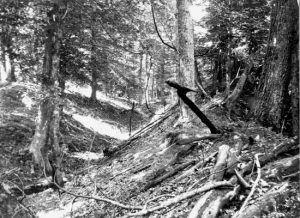 nearly the same location, causing disastrous effects. Reportedly, the president’s wife, Dolley Madison, was awoken by the quake in Washington, DC. The death toll was smaller for this quake, because most of the survivors of the first earthquake were now living in tents, so they could not be crushed. The strongest of the tremors followed on February 7, 1812, and was estimated at an amazing 8.8 magnitude…probably one of the strongest quakes in human history. Church bells rang thousands of miles away in Boston, Massachusetts, from the shaking. Brick walls were toppled in Cincinnati, Ohio. In the Mississippi River, water turned brown and whirlpools developed suddenly from the depressions created in the riverbed. Waterfalls were created in an instant and in one report, 30 boats were helplessly thrown over falls, killing the people on board. Many of the small islands in the middle of the river, often used as bases by river pirates, permanently disappeared…possibly a poetic end to their crimes. Large lakes, such as Reelfoot Lake in Tennessee and Big Lake at the Arkansas-Missouri border, were created by the earthquake as river water poured into new depressions in the ground. But, probably the most unusual activity, was what happened to the Mississippi River next. Because of the quake’s proximity to the Mississippi River, the quake had an effect that was probably unheard of until that time…a Fluvial Tsunami. A Fluvial Tsunami is something I never knew existed, but apparently it does. The quake and the ensuing fluvial tsunami in the Mississippi River, actually made the river run backward for several hours. I’m sure people were stunned and frightened at what they saw.
nearly the same location, causing disastrous effects. Reportedly, the president’s wife, Dolley Madison, was awoken by the quake in Washington, DC. The death toll was smaller for this quake, because most of the survivors of the first earthquake were now living in tents, so they could not be crushed. The strongest of the tremors followed on February 7, 1812, and was estimated at an amazing 8.8 magnitude…probably one of the strongest quakes in human history. Church bells rang thousands of miles away in Boston, Massachusetts, from the shaking. Brick walls were toppled in Cincinnati, Ohio. In the Mississippi River, water turned brown and whirlpools developed suddenly from the depressions created in the riverbed. Waterfalls were created in an instant and in one report, 30 boats were helplessly thrown over falls, killing the people on board. Many of the small islands in the middle of the river, often used as bases by river pirates, permanently disappeared…possibly a poetic end to their crimes. Large lakes, such as Reelfoot Lake in Tennessee and Big Lake at the Arkansas-Missouri border, were created by the earthquake as river water poured into new depressions in the ground. But, probably the most unusual activity, was what happened to the Mississippi River next. Because of the quake’s proximity to the Mississippi River, the quake had an effect that was probably unheard of until that time…a Fluvial Tsunami. A Fluvial Tsunami is something I never knew existed, but apparently it does. The quake and the ensuing fluvial tsunami in the Mississippi River, actually made the river run backward for several hours. I’m sure people were stunned and frightened at what they saw.
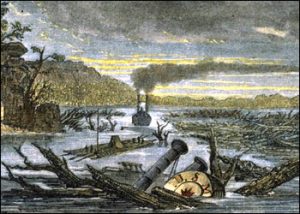
The exact death toll from this series of deadly quakes is difficult to determine because of a lack of an accurate record of the Native American population in the area at the time. The series of quakes ended in March of 1812, with aftershocks continuing for years. In the end, it was decided that approximately 1,000 people died because of the quakes, but it could be much higher. As I researched this crazy tsunami, I found out that fluvial refers to a river tsunami, the Mississippi River has actually flowed backward multiple times, and fluvial tsunamis are actually not that rare, they occur whenever a quake causes the water in a river to flow backward it rush in is normal direction.
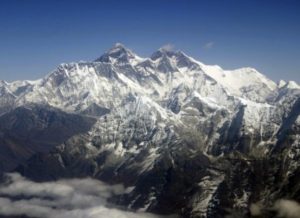 Recently, I saw an article on an app I have on my phone, called QuakeFeed. It is, of course, an app that tells me when there are earthquakes anywhere in the world, but my settings alert me if they are bigger 5.0. It’s not that earthquakes scare me or even concern me especially, because I don’t live in a really high earthquake area. I’m just naturally curious, and when a quake happens, I go to the map part of the app to see where it was. The app also has stories about the quakes that occur, especially is there was any damage or loss of life. Periodically, I look at the article part of the app, and that was where I saw the article concerning Mount Everest.
Recently, I saw an article on an app I have on my phone, called QuakeFeed. It is, of course, an app that tells me when there are earthquakes anywhere in the world, but my settings alert me if they are bigger 5.0. It’s not that earthquakes scare me or even concern me especially, because I don’t live in a really high earthquake area. I’m just naturally curious, and when a quake happens, I go to the map part of the app to see where it was. The app also has stories about the quakes that occur, especially is there was any damage or loss of life. Periodically, I look at the article part of the app, and that was where I saw the article concerning Mount Everest.
The article talked about an anomaly that I had not considered before. Now, maybe anomaly isn’t really the right word, but in my mind, that’s what it is. It mentioned that there was a possibility that due to earthquakes in the area, Mount Everest might have…shrunk. In case you didn’t know, Mount Everest is located in India and is part of the Himalayan mountain range. Mount Everest sports the crown 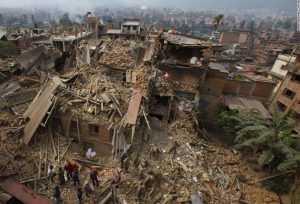 as the world’s highest elevation, at 29,028 feet. The next highest elevation in a mountain is K2 in Pakistan. At 28,251 it is a full 777 feet lower than Mount Everest…at last measurement anyway. On April 25, 2015, a 7.8 earthquake hit Nepal at 11:56am, Nepal Standard Time. Known as the Gorkha earthquake, it killed nearly 9,000 people and injured nearly 22,000. Now, the Smithsonian Magazine is reporting that shortly after that quake, Satellite data was used to determine that large swaths of land in Nepal had risen more than 30 feet, while others had dropped. The school of thought is that the possibility exists that Mount Everest has actually shrunk. As I said, to me that seems like an anomaly, but it’s quite possible that Mount Everest, and all the other mountains of the world, have repeatedly changed in altitude. Somehow, I guess I had it in my head that mountain heights are permanent, but that isn’t even logical. The mountains were created by earthquakes. Their size must be subject to change by an earthquake too. It is the only logical conclusion.
as the world’s highest elevation, at 29,028 feet. The next highest elevation in a mountain is K2 in Pakistan. At 28,251 it is a full 777 feet lower than Mount Everest…at last measurement anyway. On April 25, 2015, a 7.8 earthquake hit Nepal at 11:56am, Nepal Standard Time. Known as the Gorkha earthquake, it killed nearly 9,000 people and injured nearly 22,000. Now, the Smithsonian Magazine is reporting that shortly after that quake, Satellite data was used to determine that large swaths of land in Nepal had risen more than 30 feet, while others had dropped. The school of thought is that the possibility exists that Mount Everest has actually shrunk. As I said, to me that seems like an anomaly, but it’s quite possible that Mount Everest, and all the other mountains of the world, have repeatedly changed in altitude. Somehow, I guess I had it in my head that mountain heights are permanent, but that isn’t even logical. The mountains were created by earthquakes. Their size must be subject to change by an earthquake too. It is the only logical conclusion.
The last time Mount Everest was measured was more than six decades ago, so I guess I wasn’t the only one 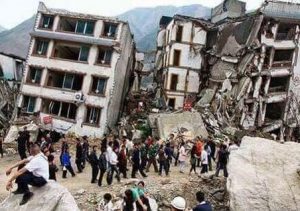 who thought it wouldn’t change. Nevertheless, now India’s surveyor-general, Dr Swarna Subba Rao has plans to send an expedition to Mount Everest. Their mission is to “re-measure the hulking rock.” They do not expect that Everest has shrunk below 29,000 feet, but the technology has changed on the last 60 years, so it is possible that there might be some discrepancies. These days, scientists will measure Everest’s height using GPS equipment and triangulation techniques. “The observational data would take a month to collect and another 15 days to compute,” said Rao. I for one am excited to hear what their findings are. And, to be honest, I hope that the elevation has changed. To me, that would be like watching history in the making.
who thought it wouldn’t change. Nevertheless, now India’s surveyor-general, Dr Swarna Subba Rao has plans to send an expedition to Mount Everest. Their mission is to “re-measure the hulking rock.” They do not expect that Everest has shrunk below 29,000 feet, but the technology has changed on the last 60 years, so it is possible that there might be some discrepancies. These days, scientists will measure Everest’s height using GPS equipment and triangulation techniques. “The observational data would take a month to collect and another 15 days to compute,” said Rao. I for one am excited to hear what their findings are. And, to be honest, I hope that the elevation has changed. To me, that would be like watching history in the making.
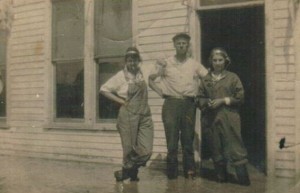 After my husband, Bob’s 2nd great grandma, Mary LuLu Taylor remarried, following the death of her first husband, James Leary, on March 26, 1888, she and her second husband had three children, bringing to four the total number of her children. Her life had taken her from Forsyth, Montana to Shelby, Missouri, where she met James Begier, who became her second husband. Later, they would move to several other times, but Montana always seemed to be in her blood and she would return there several times. Her daughter Mabel Claire Begier met and married her husband, Edward Anthony Brown in Rosebud, Montana. I’m not positive at what point Mabel became a telephone operator, but she did, and as it turns out, that’s where she was working during one of the floods that took place in Montana. That job, at that time in history, put her right in the middle of a serious situation, and in a position to help those in need of assistance.
After my husband, Bob’s 2nd great grandma, Mary LuLu Taylor remarried, following the death of her first husband, James Leary, on March 26, 1888, she and her second husband had three children, bringing to four the total number of her children. Her life had taken her from Forsyth, Montana to Shelby, Missouri, where she met James Begier, who became her second husband. Later, they would move to several other times, but Montana always seemed to be in her blood and she would return there several times. Her daughter Mabel Claire Begier met and married her husband, Edward Anthony Brown in Rosebud, Montana. I’m not positive at what point Mabel became a telephone operator, but she did, and as it turns out, that’s where she was working during one of the floods that took place in Montana. That job, at that time in history, put her right in the middle of a serious situation, and in a position to help those in need of assistance.
When we think of any disaster…be it fire, earthquake, tornado, or flood, our first instinct these days is to dial 911 on our phones. That has become the go to number for all kinds of help in times of need. That wasn’t always the case though. Years ago, it was the operator you called for help. You simply dialed “0” to get in touch with someone who could connect you with any branch of emergency help there was…as well as to let everyone else in town know about the emergency…at least back then they could. Privacy laws would have prevented that these days. Of course, if it was a big emergency, letting everyone know would be her job.
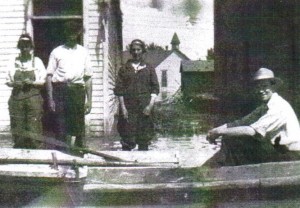 Mabel Begier was an operator during an emergency that would have qualified as one in which it was acceptable to let people know, but then my guess is that most people already knew that it was coming. Floods in towns where you live near a river are common in the Spring, especially after a particularly high snowfall year. People who live near rivers already know that Spring means that you have to watch the water levels, stay prepared to evacuate, and stay informed at all times. At that time in history, when a warning needed to be sent out, you called the operator to get the warning out. That was where Mabel came in, and she loved her job. I think the job that she had was very important, and she was a key part of the emergency efforts of that era.
Mabel Begier was an operator during an emergency that would have qualified as one in which it was acceptable to let people know, but then my guess is that most people already knew that it was coming. Floods in towns where you live near a river are common in the Spring, especially after a particularly high snowfall year. People who live near rivers already know that Spring means that you have to watch the water levels, stay prepared to evacuate, and stay informed at all times. At that time in history, when a warning needed to be sent out, you called the operator to get the warning out. That was where Mabel came in, and she loved her job. I think the job that she had was very important, and she was a key part of the emergency efforts of that era.
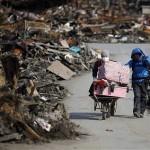 I was watching the news tonight about an American family that had just found out that their daughter was among the casualties of the tragic earthquake and tsunami a little over a week ago. Taylor Anderson, an accomplished English teacher who had been living in Japan and teaching English to young students there, used what precious time she had to escape, to make sure her students were safe. It was a brave and selfless act that cost her her life in the end. She was the first American known to have been killed in the disaster.
I was watching the news tonight about an American family that had just found out that their daughter was among the casualties of the tragic earthquake and tsunami a little over a week ago. Taylor Anderson, an accomplished English teacher who had been living in Japan and teaching English to young students there, used what precious time she had to escape, to make sure her students were safe. It was a brave and selfless act that cost her her life in the end. She was the first American known to have been killed in the disaster.
Losing their daughter was probably the single worst event in the lives of her family, but to add to the tragedy of that loss, is the fact that, as often happens in the aftermath of a disaster, information can get mixed up. Taylor’s family had been told that she had survived and was safe, only to find out later that they had been misinformed. A devastating turn of events. Almost impossible to believe.
I know how this family feels, and my heart goes out to them. My family also experienced a similar devastating situation of misinformation. My Great Aunt Gladys was one of the victims in the 1989 crash of United Airlines flight 232 in Sioux City, Iowa. Our family was also told that she had survived, and it was even on television…but it wasn’t to be. Somehow her purse had arrived at a hospital with another woman, so they thought it was her. We couldn’t believe it, and even continued to watch the reports, hoping against hope that they had been wrong.
to watch the reports, hoping against hope that they had been wrong.
Losing a loved one in any kind of disaster is unbearably hard, but when you are told they made it, and then find out they didn’t…well, it’s like losing them twice. It is no one’s fault, of course, and those people who have told someone their loved one is safe, only to have to tell them they were mistaken, are torn to shreds too. It is devastating to all involved, and my heart goes out to each and every one of them.
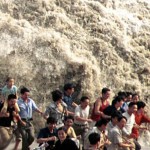 While watching the news concerning the earthquake in Japan, and the ensuing tsunami in Japan, Hawaii, and the US west coast this week, I am once again shocked and saddened by the chances people take. The people is Japan had virtually no warning, and so they couldn’t prepare for the tragic events that happened that awful day, but the man that was swept out to sea in California while taking pictures of the waves, knew the chance he was taking.
While watching the news concerning the earthquake in Japan, and the ensuing tsunami in Japan, Hawaii, and the US west coast this week, I am once again shocked and saddened by the chances people take. The people is Japan had virtually no warning, and so they couldn’t prepare for the tragic events that happened that awful day, but the man that was swept out to sea in California while taking pictures of the waves, knew the chance he was taking.
I’m quite sure that if the people in Japan had been able to get away, they would have. There simply wasn’t time, and as a result, many lives were unavoidably lost. My heart goes out to everyone affected by this tragedy. Those left behind have a monumental job ahead of them to rebuild in the midst of so much grief.
The people in Hawaii and the US west coast, had enough warning, however, and were told to stay away from the coast line. So why do we feel the need to go out there and get pictures of the event, simply to say we were there. My mind wanders to the thoughts going through the mind of that poor man being swept out to sea, knowing that his impending death was due entirely to his own foolish choices. Obviously, if he could do it all over again, knowing what he now knows, he would literally run in the opposite direction. I’m sure he thought of his loved ones toward the end, with much regret for putting them in a position of such grief. I know it was not his intent to end up this way, but the love of the all elusive historic photo to document the day, overtook his good sense concerning his own safety.
As I watched the footage, I saw a wave coming in to a Santa Cruz, California marina, and hitting the boats parked there. People were walking on the docks there! It was unbelievable! The reporter was saying that these people had been told not to be there, but once again the thought that “it won’t happen to me” kicked in and curiosity won out. Even if you aren’t swept away, getting caught between two colliding boats would take the same toll. People, please…think of your loved ones, if you can’t think of yourself. Please don’t take the risk. It isn’t worth it.

